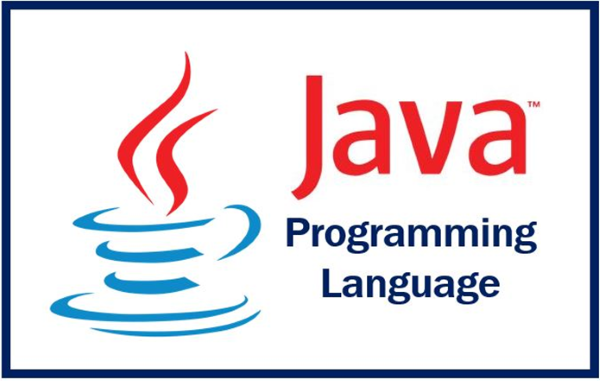
Not all programming languages are created equal. Some build billion-dollar apps while others fade into obscurity.
Technology continues to advance across sectors. However, not all languages deliver equal value across industries or functions.
This guide outlines the top programming languages to learn, based on relevance, application, learning difficulty, scalability, and employment demand, aimed at helping you align your learning path with practical career outcomes.
1. Python: The All-Purpose Language
Python is a super versatile language. It’s used for a lot of different things, like web development, data science, and artificial intelligence (AI). Many companies in industries like healthcare, technology, and finance use Python to create their software.
Yes, Python is beginner-friendly. Its syntax (the way the code is written) is simple, which makes it a great choice for beginners.
It has a huge community with tons of online resources, libraries (pre-made code that helps you build things faster), and tools that make programming easier.
Python developers get paid a good amount of money, making $95,000 to $150,000 a year. It might not be the fastest language out there, but it’s still great for building large applications. Plus, it can be combined with other faster languages to improve performance.
2. JavaScript: The Web Development Language
JavaScript is the main language used for building websites and web applications. It helps make websites interactive, like when you click on buttons or scroll down a page. It’s also used in mobile app development with frameworks like React Native.
JavaScript has a moderate learning curve, but if you’re already familiar with the basics of coding, it’s not too hard to pick up.
JavaScript has one of the largest communities of developers. There are many frameworks (like React, Angular, and Vue.js) that help developers build better websites faster.
JavaScript developers are in high demand because almost every website uses JavaScript. It’s the most used programming language worldwide.
JavaScript is very fast at running websites. With tools like Node.js, it can also be used for server-side programming, making it a great all-around language.
3. Java: The Classic Language

Java is a tried-and-true language that’s still widely used in large companies. It’s used to build everything from mobile apps (like Android apps) to enterprise-level applications.
It’s a little more complicated than Python, but it’s not impossible to learn. You need to understand object-oriented programming (OOP), which is a way of organizing your code.
Java has been around for a long time, so its community is huge. There are lots of resources, tools, and support from other developers.
Java is still one of the top languages for large companies, especially in industries like banking and insurance. Java developers can expect to make good salaries.
Known for being reliable and scalable. It’s great for large applications that need to handle a lot of users.
4. Go (Golang): The Cloud Language
Go, also known as Golang, was created by Google and is great for building cloud applications, networking tools, and microservices (small, separate pieces of a bigger program). It’s used in companies like Google and Uber.
It’s easy to learn because it has a simple syntax, and it’s designed to be fast and efficient. As it is growing fast, with more and more developers joining the community. There are plenty of resources to help you learn Go.
Go developers are in high demand, making it one of the top programming languages to learn, especially for jobs that involve building cloud-based applications.
Go is known for being super fast and efficient. It’s perfect for building programs that need to handle lots of data or users.
5. Rust: The Fast and Safe Language
Rust is used for systems programming, building games, and anything where you need high performance and memory safety. It’s great for things like video games and operating systems.
With a steep learning curve. It’s a little harder to learn than Python or JavaScript, but it’s worth the effort if you want to work on performance-heavy applications.
Rust has a passionate and growing community. It’s becoming more popular, especially for performance-critical jobs, although it’s still new, and many companies that focus on performance and safety are hiring Rust developers.
These developers often earn high salaries because of Rust’s complexity. It’s extremely fast and helps prevent bugs related to memory issues, making it perfect for large systems and applications that need to run smoothly.
6. TypeScript: JavaScript with a Twist

TypeScript is a superset of JavaScript, meaning it includes all of JavaScript’s features while adding powerful new capabilities, most notably, static typing. Static types allow developers to define the kind of data a variable or function should handle.
This helps catch common bugs during development, before code ever runs, making the entire development process more predictable and less prone to runtime errors.
If you already have a foundation in JavaScript, learning TypeScript will be straightforward. The syntax is familiar, and you can gradually introduce TypeScript into your projects. For developers looking to write cleaner, more maintainable code, TypeScript offers a clear advantage.
Features like type annotations, interfaces, and type inference make it easier to understand, document, and debug your codebase, especially as it grows in size and complexity.
One of TypeScript’s greatest strengths is its ability to scale with your application. It’s used widely in enterprise environments and by tech giants such as Microsoft, Google, and Airbnb to build large, feature-rich applications.
Because TypeScript enforces stricter rules around data types and structure, development teams can collaborate more efficiently, reduce bugs, and maintain code quality over time.
7. Kotlin: The Android Language
Kotlin has rapidly become the go-to language for Android app development, officially supported by Google as a first-class language for building Android applications.
It offers a modern, streamlined alternative to Java, designed to be more concise, readable, and safer, making development faster and less error-prone.
One of Kotlin’s biggest strengths is its interoperability with Java, allowing developers to use both languages within the same project. This makes it especially easy to learn for those with a Java background.
Beyond mobile development, Kotlin is increasingly being used in backend development with frameworks like Ktor and Spring Boot, and even in web development through Kotlin/JS. This versatility makes it a strong choice for developers who want to work across multiple areas of software development with a single language.
As Android continues to lead the global smartphone market, the demand for Kotlin developers is skyrocketing. Companies seek Kotlin expertise to modernize their mobile applications, improve performance, and build scalable digital solutions.
Kotlin’s performance, strong community support, and full integration with Android Studio make it a powerful tool for building high-quality apps.
8. Swift: The iOS Language
Swift is the primary programming language for developing apps across the Apple ecosystem, including iPhones, iPads, Macs, Apple Watches, and Apple TVs.
Created by Apple as a modern alternative to Objective-C, Swift has quickly become the standard for iOS and macOS app development thanks to its performance, safety features, and ease of use.
One of Swift’s standout qualities is its simple and intuitive syntax, making it easier to learn, especially for beginners or those coming from other programming languages like Python or JavaScript.
It eliminates many of the complexities of Objective-C while maintaining the power needed to build advanced, feature-rich applications. Swift also includes modern programming features such as optionals, closures, and type inference, which help developers write clean, efficient, and bug-resistant code.
Apple provides strong support for Swift, and it’s deeply integrated into Xcode, the official development environment for Apple platforms. This makes the development process smooth, with powerful tools for UI design, testing, and performance analysis.
Swift is also backed by a large, active community that contributes libraries, tutorials, and open-source tools, making it easier for developers to find support and accelerate their learning.
In Summary
Programming language selection should reflect purpose, not popularity. Progress in software development depends not only on language proficiency but also on discipline, consistency, and industry awareness.
With a clear learning strategy and focus on in-demand skills, individuals can position themselves for success.
There’s no one-size-fits-all answer when it comes to learning a programming language. The right choice depends on what you want to build and where you want to work.
What matters most is picking a language that aligns with your career path, committing to learning it well, and staying curious. The tools may change, but a strong foundation in programming will always keep you one step ahead in the tech world of 2025 and beyond.
